A majestic woody plant, oak is a part of the Quercus genus, which belongs to the beech family (Fagaceae). Most types of oak trees are deciduous trees, but there are also evergreens such as Holm oak, Mexican blue oak, and Cork oak, to name a few.
Their height can be between 20 feet like that of Japanese evergreen oak and 200 feet like the height of white oak called Mingo. Let’s take a closer look at the different amazing Types Of Oak Trees.
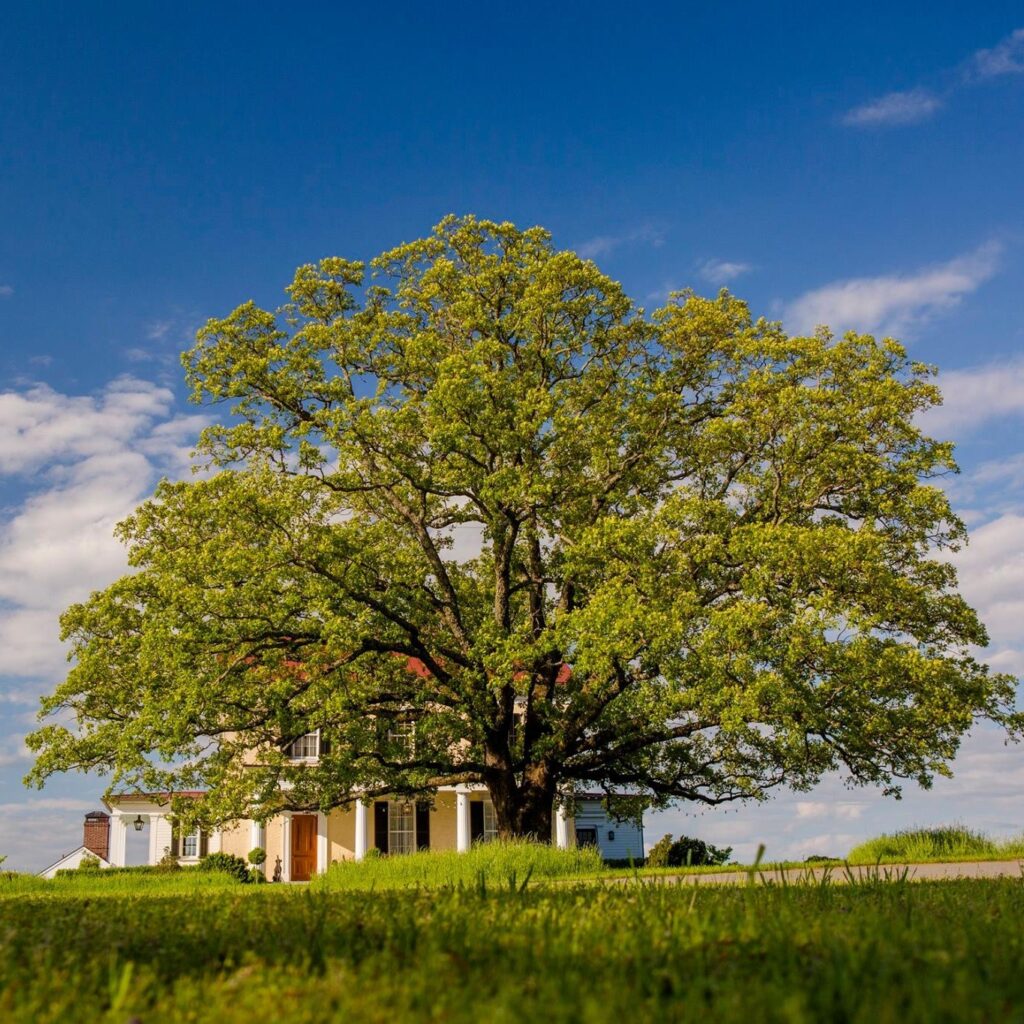
Oak trees are one of the oldest and most widespread trees on this planet, and they existed before humans, appearing some 65 million years ago.
They are famous for their durability; some species are considered old only when they reach the age of 700. Until that age, the trees continue to grow and produce acorns to reproduce their offspring. However, when trees exceed 1,000 years, their growth slows down, and some parts begin to wither and die.
1. Oak Flower
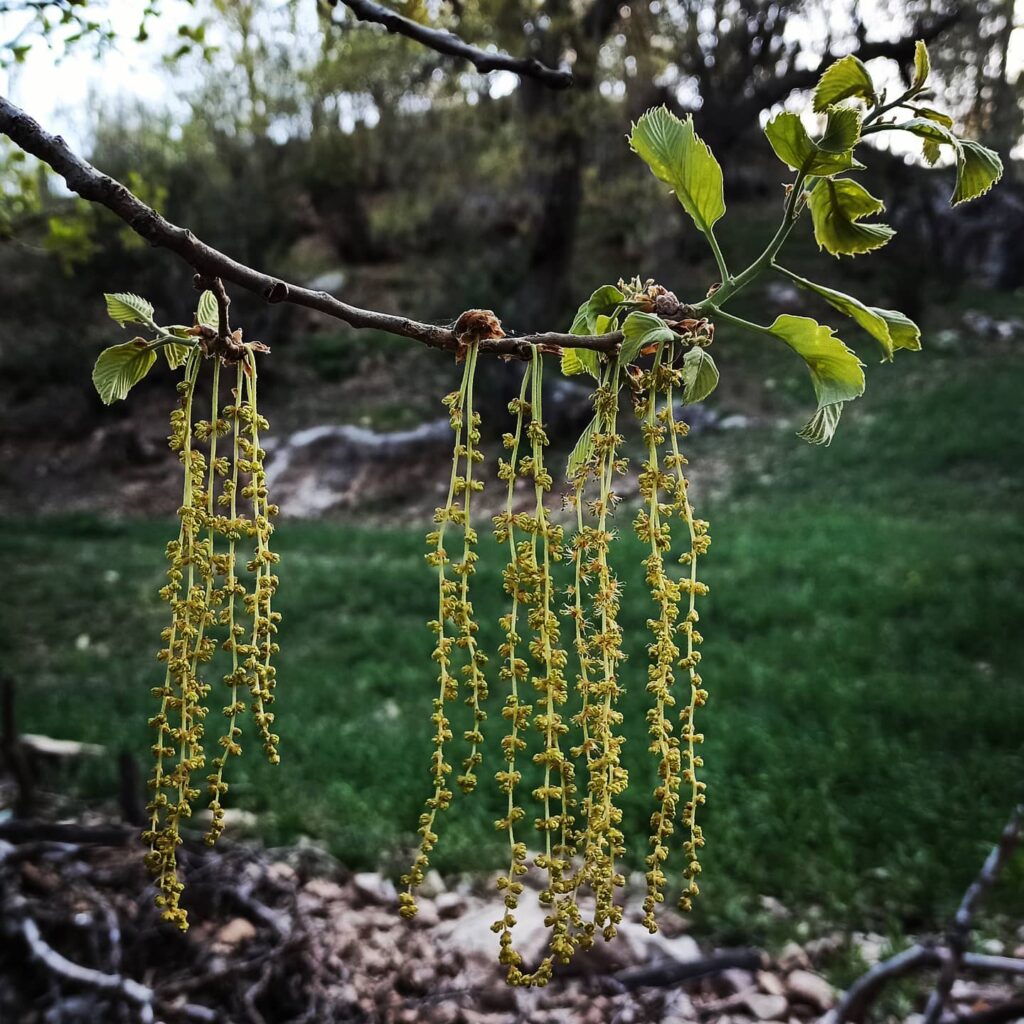
Oak flowers are monoecious, unisexual, and arranged on catkins. Drooping cylindrical male tassels develop on the tops of last year’s shoots. On the other hand, female tassels, which are smaller than male flowers, develop on new shoots.
2. Oak Fruit
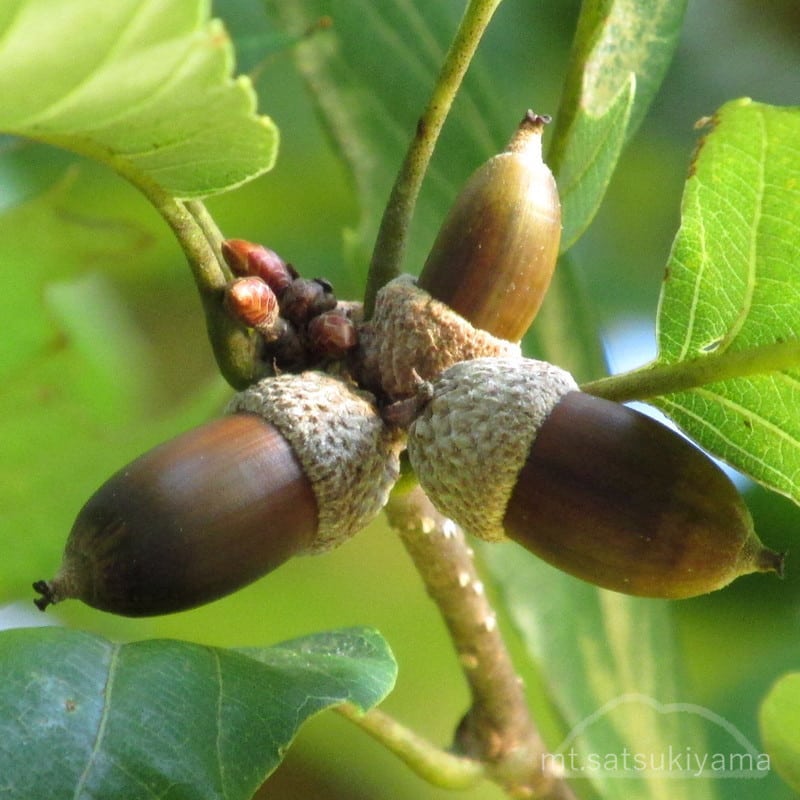
The fruit of an oak tree is called an acorn. Acorn can be ball-shaped (globose) or elongated (ovoid) and appear in brown, black, golden, or yellowish colors.
Most acorns are between half an inch and two and a half inches long and three-quarters of an inch and two inches wide. The top of the acorn features a cap, scientifically called a cupule, with a scaly tip from which a short stalk emerges.
3. Oak Subgenera
Many types of oak trees can be divided into two groups which are also called subgenera: subgenus Quercus and subgenus Cerris. These two groups are further divided into eight sections.
However, most people are familiar with the white oak – red oak division.
White oak trees, which belong to the Quercus section of the Quercus subgenus, have smooth leaves without bristles and spirally arranged acorn cups. Their acorns ripen in one season, have sweet-tasting seeds, and germinate within days of falling.
Red oaks, which belong to the Lobatae section of the Quercus subgenus, have bristle-tipped leaves, hairy acorn husks, and bitter acorns. Red oak acorns ripen at the end of the second growing season.
Most Popular Oak Trees
Over 600 types of oak trees are widespread in the temperate and warmer forest areas in the northern hemisphere (Asia, Europe, and North America). Some of the most popular oak trees are:
- Common or English oak (Quercus robur)
- (Eastern) white oak (Quercus alba)
- Bur oak (Quercus macrocarpa)
- Scarlet oak (Quercus coccinea)
- Holm oak (Quercus ilex)
- Southern red oak (Quercus falcata)
- Post oak (Quercus stellata)
- Pin oak (Quercus palustris)
- Chestnut oak (Quercus montana)
- Southern live oak (Quercus virginiana)
Oak Symbolism In Ancient Times

Oak has always held a special place in humankind’s culture thanks to its many qualities such as strength, durability, longevity, verticality, variety of uses, and economic value.
Moreover, it symbolizes the backbone of the cosmos, the connection between the heavenly and earthly worlds, i.e., it is a symbol of eternity and unity.
Because of the awe caused by the sight of a full-grown oak tree, it has everywhere been synonymous with strength and sublimity, both physical and moral. As one of the first trees, it was a symbol of many earthly sovereigns and, therefore, the most frequently encountered tree in heraldry.
In ancient times, some people, such as the Celts, Germans, and Slavs, held rituals, meetings, and trials under the oak tree’s canopy.
Oak trees held high esteem in mythology as well.
Since oaks are one of the tallest trees, they attract and are often struck by lightning bolts. Many peoples noticed this a long time ago. For this reason, the oak tree was usually dedicated to supreme thunder gods such as Zeus, Jupiter, Thor, and Perun or the Vedic Indra and Parjanya.
The Greeks believed that oaks were inhabited by dryad nymphs, which is why it was forbidden to cut them down until it was determined that the nymphs had left them. The Zeus oak was located in the old sacred grove in Dodona, where the priestesses listened to the rustling of the leaves and conveyed divine messages.
Many important oaks also appear in the legends of ancient Rome. Next to all Jupiter’s sanctuaries were oak trees, while the eternal fire of Vesta’s temples fed exclusively on oak. Before the well-known laurels, the winners of the Pythian games, as well as Roman heroes and emperors, were crowned with oak sprigs.
The Old Testament tells us about the oak under which Abraham built an altar to Yahweh, and Yahweh himself appeared to him under the oak. Due to their longevity, oak trees represent wisdom and knowledge and are often used as a metaphor for god.
Oak as a Building Material
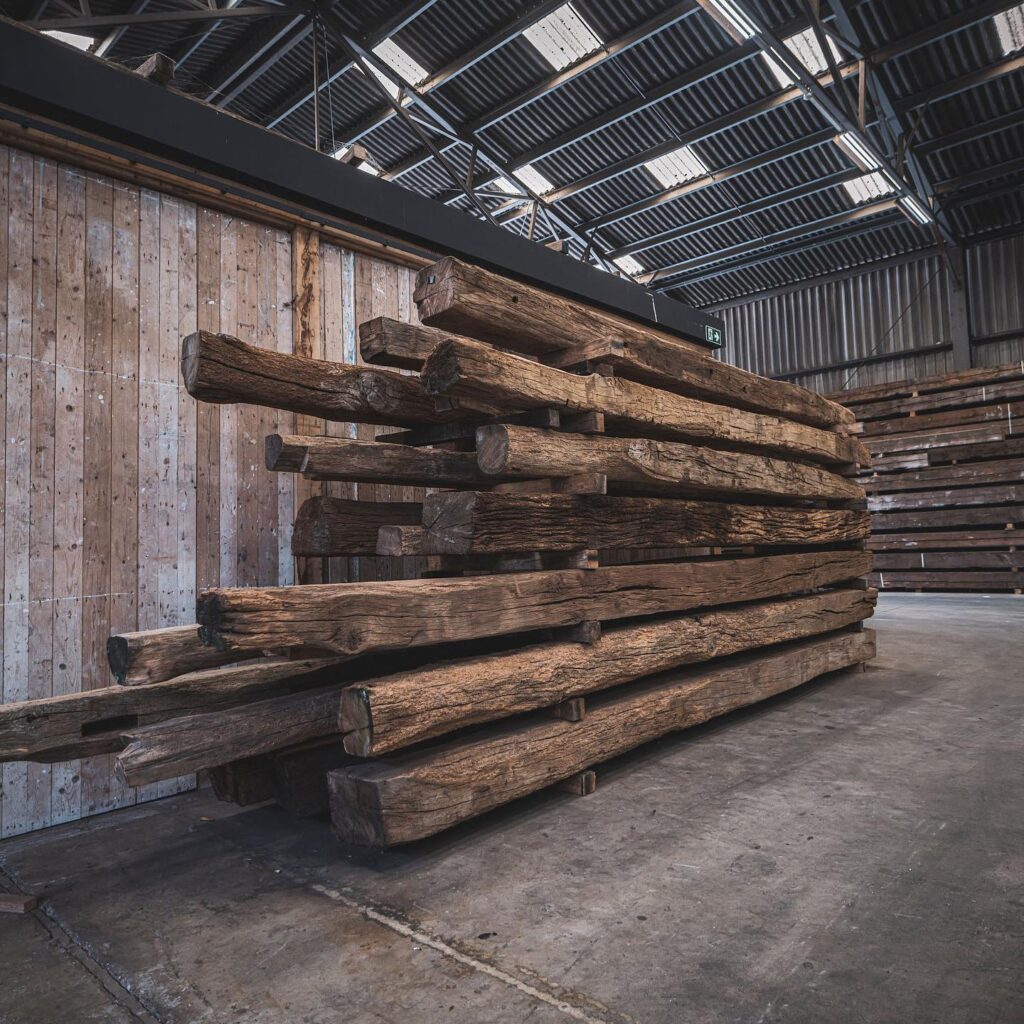
The use of oak in traditional woodworking, pre-manufacturing and manufacturing crafts, and the production of various items for use by everyone in the home industry is primarily based on one factor.
That factor is humans’ general orientation towards using wood as the closest, most widespread, most accessible, and relatively easily processed material, providing an extremely wide range of applications. These uses include agricultural implements and tools, fences, furniture, coffins, houses, flooring, barrels, etc.
Therefore oak’s extraordinary physical, mechanical, and aesthetic properties gave it not only a symbolic and (spi)ritual value but significantly influenced its prevalence in woodworking.
You will hardly find any large and significant buildings built without using oaks. Westminster Abbey or the Cathedral in Petersburg are just some famous buildings whose roofs still hide oak pillars.
But perhaps the best use of oak was not on the ground. Until metal ships appeared, oak was unrivaled as a building material in shipbuilding due to its hardness and resistance to moisture.
Ancient heroes and recent explorers such as Columbus, Magellan, Cook, and many others, used and traveled around the world on these “floating forests”.
It’s no wonder that oak is said to be the tree of trees.
Oak as Food Source and Medicine

Before the Agricultural revolution, when corn and potatoes were not yet known in Europe, oak forests abundant in acorns were an essential source of food for humans and animals.
How this was once a quality and important way of feeding livestock can be seen from the humorous but true German saying: “The best hams grow on oaks.”
Acorns are roasted, ground, and used as a substitute for coffee or as an addition to flour or stews to thicken them. They contain about 35% starch, 8% sugar, 2-4% protein, 4% fat, and 2% resin.
They also contain tannic acid (6-9%), which gives them a bitter taste, so they need to be rinsed for a long time before use.
Young leaves and oak bark, used in spring, were a part of the traditional medicine not so long ago. Like the acorns, the bark is high in tannins and was utilized in treating diarrhea, for which oak bark tea was prepared. It was also extensively used in the tanning of animal skins and furs.
1. English Oak (Quercus Robur)
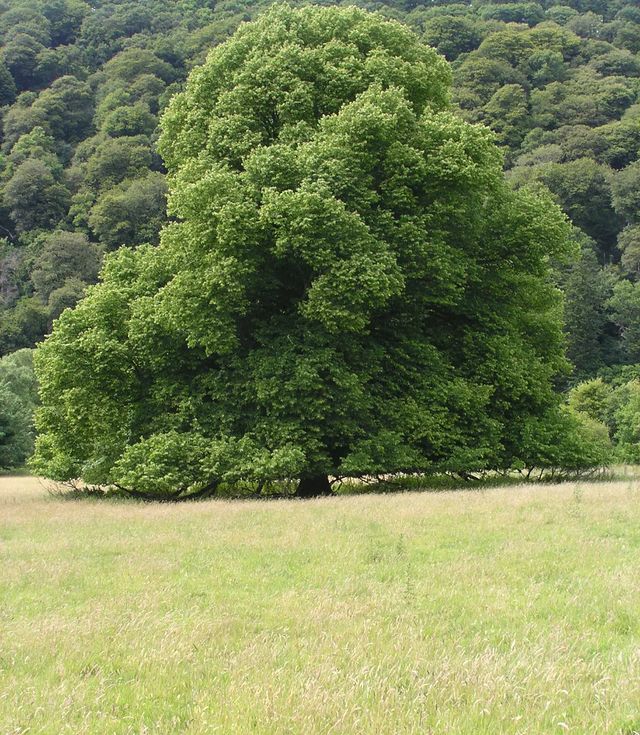
English oak is a large deciduous tree from the beech family (Fagaceae) that grows 100 to 120 feet tall with a trunk diameter up to 3 meters long. It has many names, some of which are common oak, pedunculate oak, and European oak.
Common oak trees are known for their well-developed and deep root system that starts with a strong tap root, while later on, side veins develop. They are also known for their longevity, as certain specimens can live up to 1,500 years.
The crown is broad, well-branched, but irregular, with many horizontally hanging strong and thick branches.
The leathery and dark green leaves, which are on very short, barely noticeable but thicker stems, are inverted ovate and firm. They have the characteristic cuts towards the central vein, which form blunt, asymmetric lobes.
Initially hairy but becoming bare as time passes, the leaves grow from three to seven inches long and one and four inches wide.
The flowers are unisexual, yellow-green, blooming in April and May at the time when the leaves also appear. The male flowers are collected in one to two inches long hanging catkins, while the female flowers are single, or up to five in groups and are located on long, thin stalks.
Quercus robur, the most famous representative of the Quercus genus, is widespread in almost all of Europe and is also found in the Caucasus and Asia Minor. It is not rare to see pure common oak forests in these areas.
English oak is resistant to drought, high temperatures, wind, and city pollution. Still, it has difficulty growing on shallow, dry, or acidic soils and is also sensitive to late frosts.
Deep and fertile, moist soils rich in limestone suit it the best.
Related: Top 10 Types of Elm Trees| Elm Tree Uses, Pictures and Identification Guide
2. Willow Oak (Quercus Phellos)
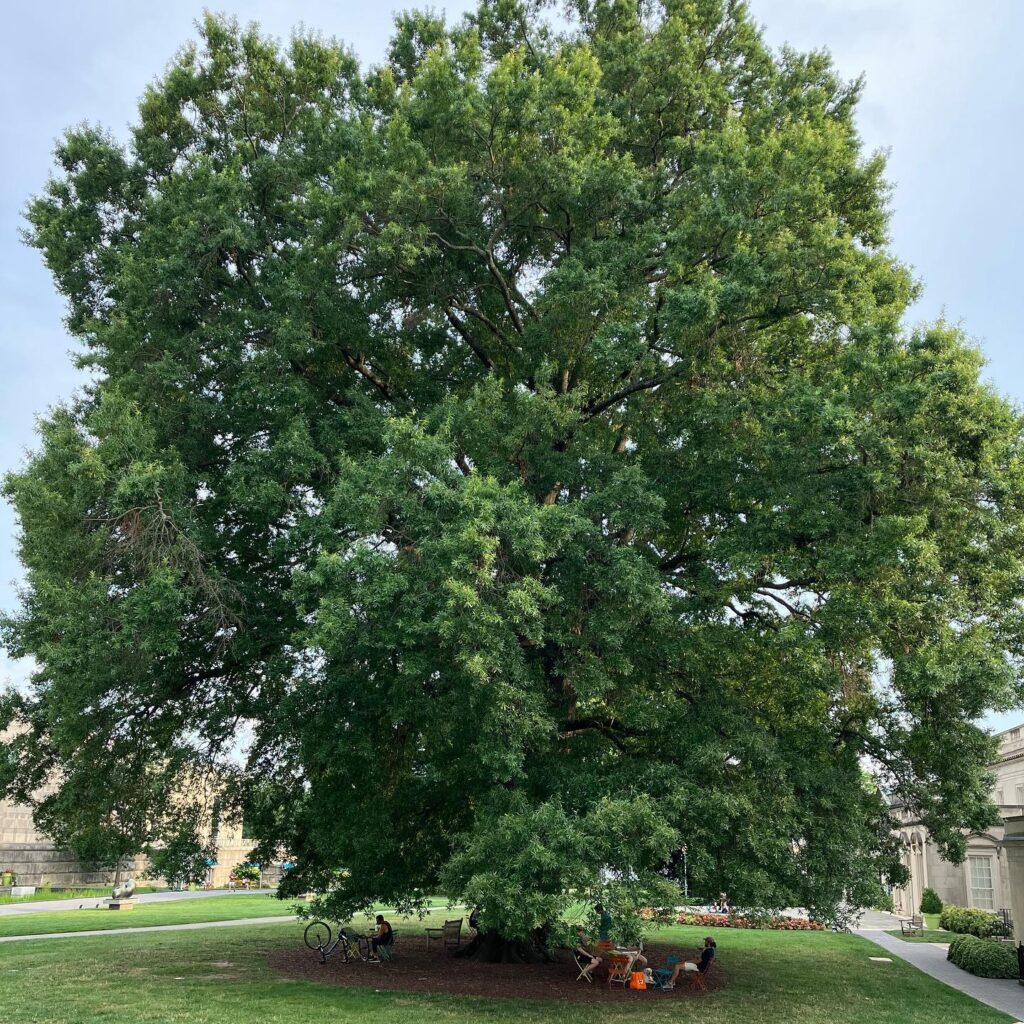
Although early in its life cycle, it has a pyramidal form, Willow oak is a tree that rounds in shape as it matures. Willow oak leaves resemble that of a willow tree: alternatively arranged, long, narrow, lanceolate, or elliptical, and pointed at both ends.
In the fall, the light green foliage turns bright yellow or russet-red.
Willow oak is a medium-sized oak and a common sighting in parks, streets, and large residences not only because it is an exceptional stately shade tree but also because it is tolerant of urban pollution, fast grower, low maintenance, and almost disease and insect-free.
If you want to grow Willow oak, you should know that it has high water requirements as it is rarely found on upland sites.
Deep, wet, and well-drained acidic soil is its preferred substrate. Like many other oak tree varieties in the Fagaceae family, this red oak tree requires full sun exposure for its branches to develop a strong branching form.
3. Northern Red Oak (Quercus Rubra)

Northern red oak is an upright tree with a wide, rounded crown that can grow up to 90 feet in height and a trunk with a diameter of up to 6 feet.
Young bark is smooth and gray; later, it becomes thickened, but only with shallow fissures. Finally, red-brown twigs feature ovoid buds of the same color with hairy scales.
Oblong or obovate leaves are alternate, simple, 5 to 8 inches long, 4 to 5 inches wide, and cut into 7 to 11 lobes with sharper edges. They are shiny and light green on the face, while the reverse side is hairy near the ribs. With the arrival of autumn, the foliage takes on a deep red color.
Shallowly placed in a scaly cap, acorn ripens 18 months after pollination.
Northern red oaks grow naturally in North America, but they have been cultivated in Europe since the beginning of the 18th century as ornamental trees in parks. Quercus rubra var. maxima, which has a large acorn, is the most common variety of this red oak species.
Northern red oak is a relatively quick grower resistant to low temperatures and urban pollution. It also tolerates shade and most soil types.
However, it prefers slightly acidic poor soils and is suitable for sandy and fresh soil.
4. Swamp White Oak (Quercus Bicolor)
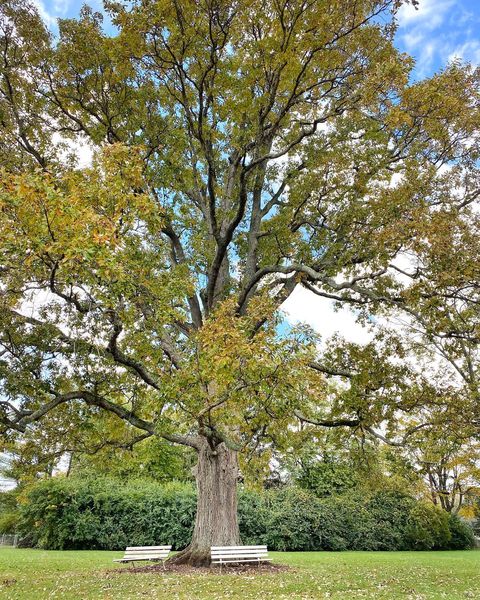
Not only a popular woodland variety but also a shade tree due to its 70 feet-wide canopy, Swamp white oak is a long-lasting rugged tree.
As evident from its name, this white oak tree thrives in damp and moist conditions, which should be considered when starting a new plant.
Swamp white oak draws attention with its bark and foliage. Dark gray bark has deeper rigs than scales; you can even peel it off in the young species.
Foliage, which earned this wind and frost-resistant tree, the bicolor name is glossy dark green and leathery on the upside, while the underside is silvery-white and fuzzily textured.
5. Scarlet Oak (Quercus Coccinea)
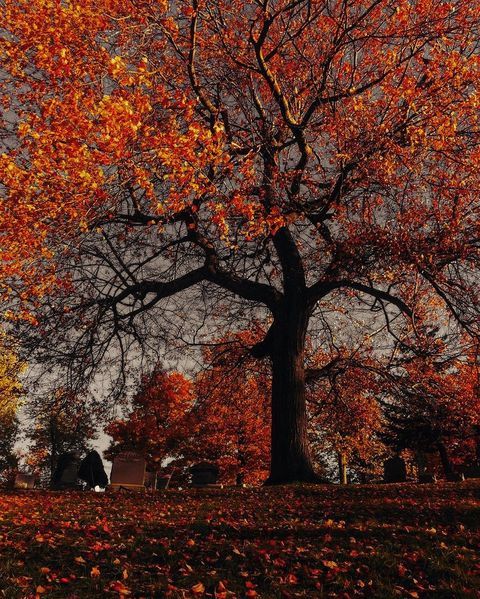
Scarlet oak is a deciduous tree from the beech family (Fagaceae) with probably the most beautiful autumn leaves of all the oak trees.
Coccinea, which means scarlet in Latin, was given as the species name because the leaves take on a bright red color in autumn, unlike many other oak trees whose leaves turn brown.
Native to eastern and central North America, Scarlet oak grows in dry, sandy, and acidic habitats and is frost-resistant. It is often grown as an ornamental tree in gardens, parks, and avenues.
When young, this red oak tree has a three-foot-diameter trunk covered with smooth and gray bark, later becoming darker with irregular furrows. It features an open, rounded crown and a height of up to 100 feet.
Deeply lobed leaves are three to seven inches long and three to five inches broad. They are divided into five to nine lobes, each with three to seven bristles. The face side of the leaf is green, shiny, and bare, while the reverse side is pale and only slightly covered with hairs around the veins.
Half or third of the reddish-brown oval-shaped acorn, which ripens in October, is covered with a cap.
6. Bur Oak (Quercus Macrocarpa)
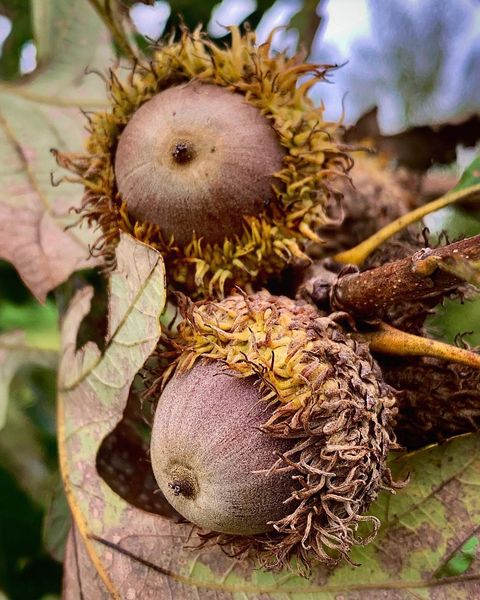
This species’s English and botanical names reveal its two distinguishing traits.
At least two-thirds of the Bur oak acorn is covered with a deeply fringed and woolly cap, resembling a spiny cup that surrounds chestnuts. Name of that cup? Bur or burr.
The botanical name of this long-lived tree, known to live more than 400 years, comes from the Greek words macro, meaning large, and karpos, meaning fruit, since Bur oak has the largest acorn of any oak native to the United States.
Bur oak is a mighty white oak reaching up to 80 feet in height and spreading just as much, so plan a massive space for it. But do not worry about that space being filled any time soon as this tree is a slow grower stretching less than one foot per year.
7. Pin Oak (Quercus Palustris)
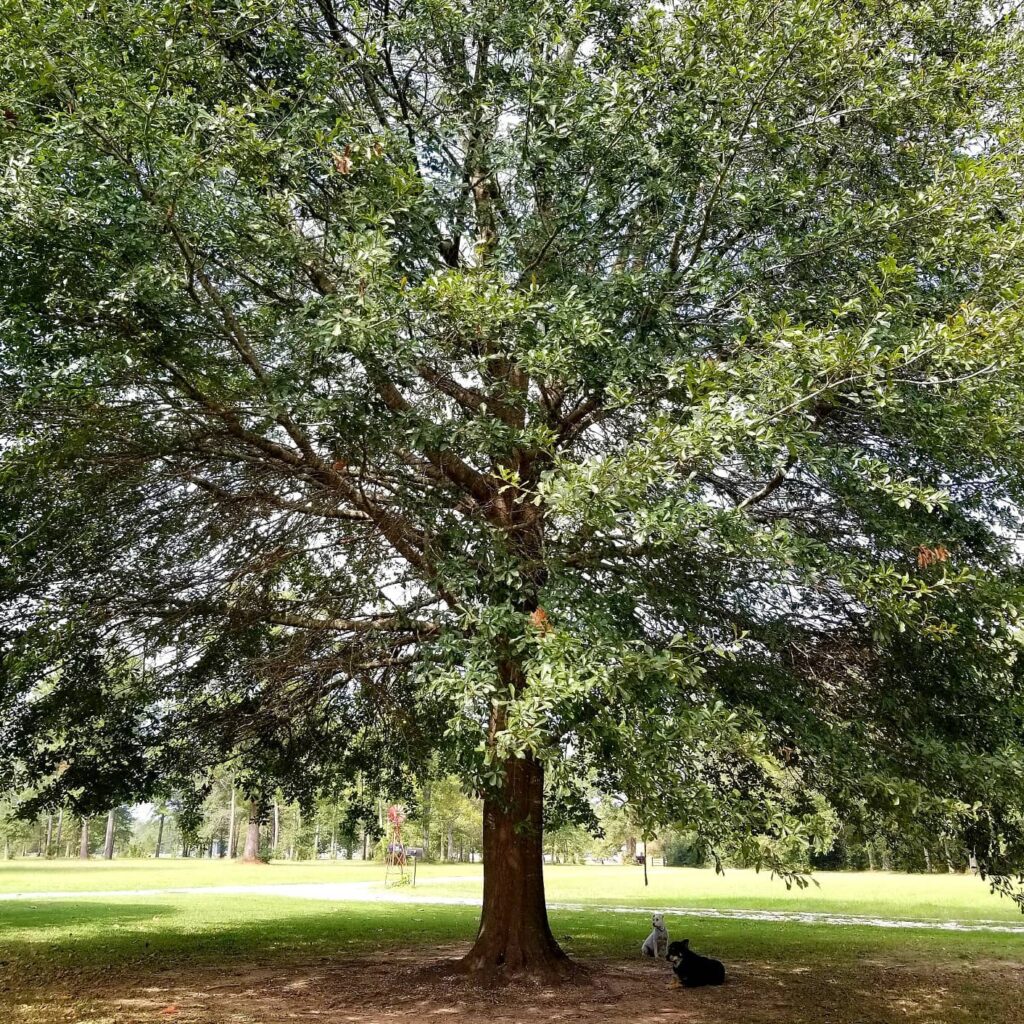
Pin oak has a couple of qualities other oak species do not possess.
First, thanks to its shallow root system, it is easily transplanted and, therefore, quite popular in nurseries. In addition, it can grow anywhere between two and three feet every year, making it one of the fastest-growing types of oak trees.
Add to that bronze or deep red fall foliage that will sometimes make it all the way into the winter, and it is easy to understand why Pin oak is often found in large landscapes.
However, it does not come without downsides. Unlike the upright top branches or horizontal middle ones, the ones that grow just above the trunk droop and hang, making Pin oak an annoying presence in urban settings.
Another problem for the Pin oak, sometimes called Swamp Spanish oak, is the yellowing of the leaves that occurs in alkaline and sometimes even in soils with neutral pH.
Related: Money Doesn’t Grow On Trees: The Price Of A Bonsai Tree
8. Southern Red Oak (Quercus Falcata)
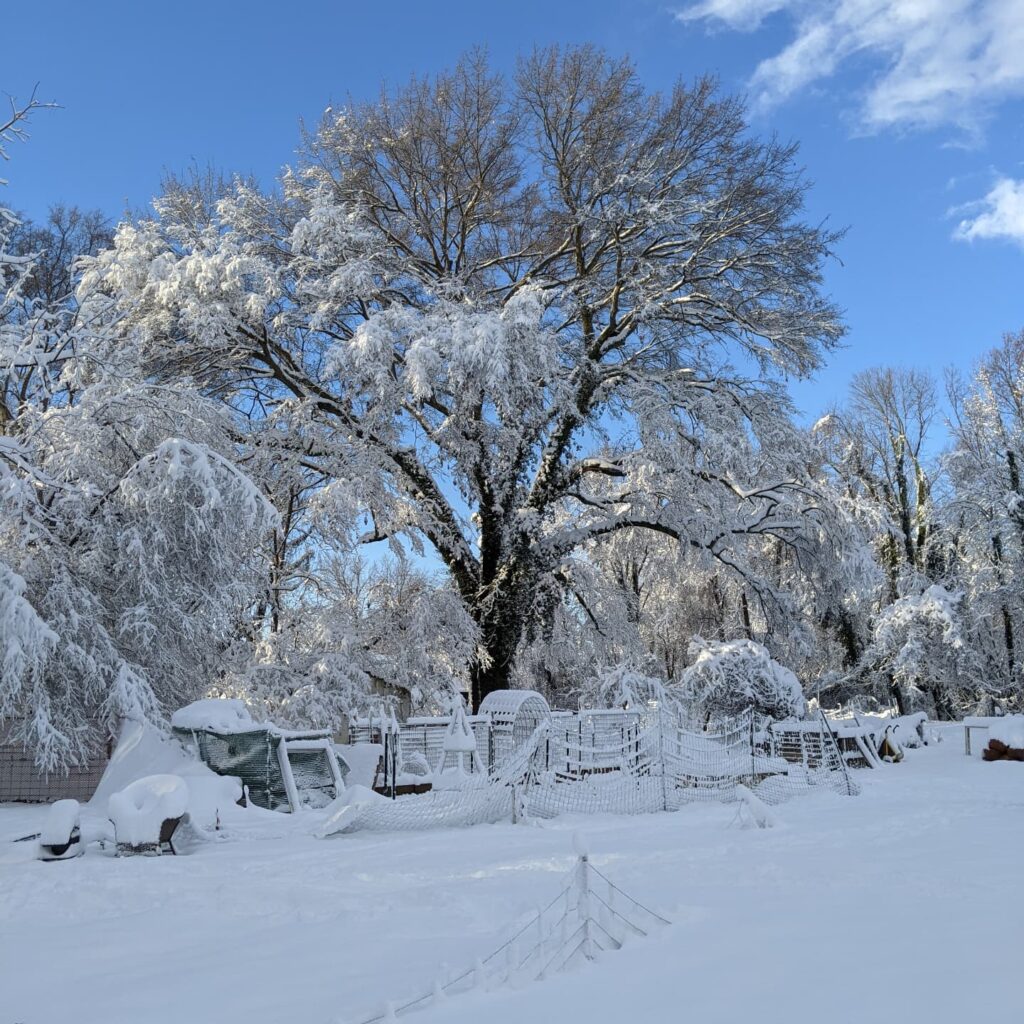
Quercus falcata is naturally found on poor upland soils in the southeastern United States. It is commonly known as Southern red oak or Spanish oak, with the first name being related to its natural habitat and the second due to the fact that the Spaniards established their first settlements in that same place.
Spanish oak is characterized by dark gray bark, which is scaly due to many horizontal and vertical cracks.
Younger trees usually feature three shallow lobes on their bristle-pointed foliage, while the more mature specimens have between five and seven deep lobes. The leaf blade is between five and nine inches long.
9. Overcup Oak (Quercus Lyrata)
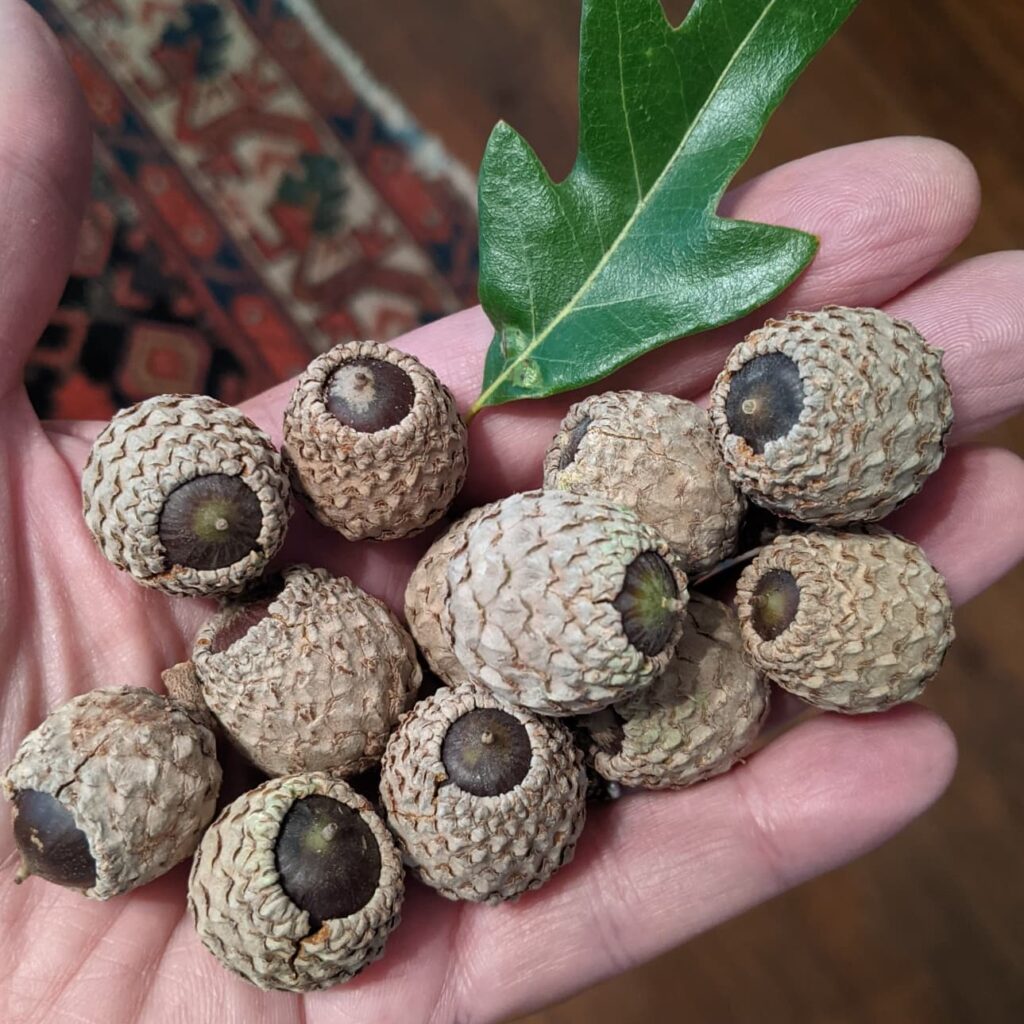
Overcup oak is one of the most flood tolerating oak species and is generally found in bottomlands and along stream edges.
This species’s acorn is almost fully covered by the cap, which helps them float until they reach dry land, where the seeds germinate into new specimens.
Overcup oak is a medium-sized oak rising between 45 and 60 feet that features an almost perfect round or oval, open canopy making it a great landscape tree.
Overcup oak is a moderately growing tree with a yearly height increase of between one and two feet.
10. Black Oak (Quercus Velutina)

This medium to large deciduous tree is found in various soil types as it can tolerate poor, dry, sandy, and rocky terrains. However, it best thrives in moderately moist and acidic soils.
Black oak‘s crown can be pretty irregular: open to half open and broad ovoid to round with large, crooked, widely spreading branches.
The thick, halfway-lobed leaves are simple and alternate. Usually growing between five and ten inches, they feature seven to nine triangular, bristle-pointed lobes. In the fall, they will change color from the usual glossy dark green to orange or red.
This species is sometimes mistaken for the Northern red oak, but there is a couple of ways of distinguishing between them: Northern red oak usually has more lobes (7 to 11) which are more shallow than the lobes of Black oak (5 to 9).
Their acorn form is also different: while similar in length (around one inch), the Black oak acorn’s cup is half the total size, while the Northern red oak acorn’s cup covers just one-fourth.
11. Holm Oak (Quercus Ilex)
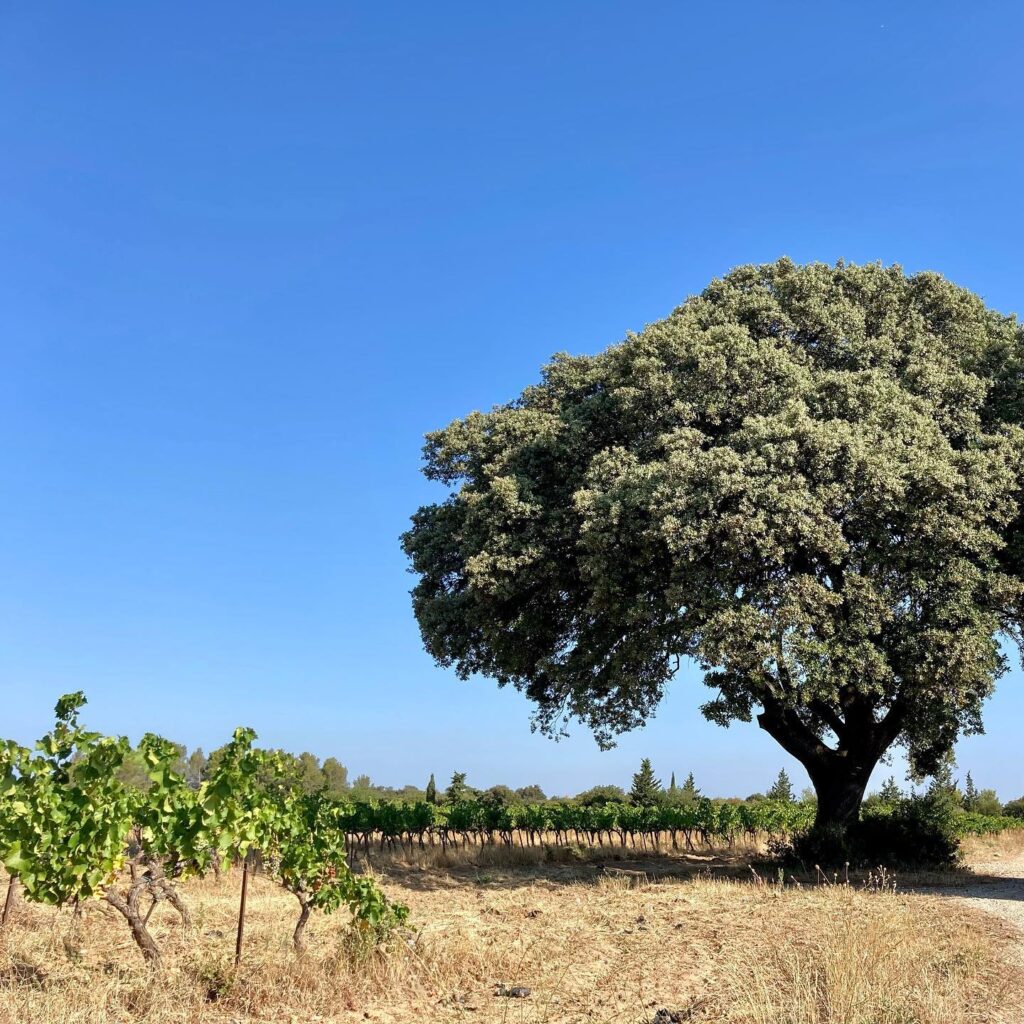
The holm oak (Quercus ilex) is an evergreen shrub or tree from the Fagaceae family. It grows up to 60 feet, forming a broad, dense, rounded canopy.
The root system is well developed, featuring a strong and long main root and sturdy lateral vessels. The tree’s trunk is usually about one foot long in diameter, although specimens with up to six feet long trunks also exist.
Holm oak’s bark is gray and smooth when the tree is young. As the tree matures, it becomes darker and longitudinally and transversely fissured. Young branches and buds are thick and densely hairy.
The leathery leaves, which usually remain on the tree for two years, are dark green and shiny on the upper side and pale, whitish, or yellowish on the reverse. Firm and whole, they grow one to three inches long and one to two inches wide with pointed tips.
Unisexual and monoecious Holm oak flowers bloom in April and May. Up to three-inch long male flowers droop in catkins, while the female flowers are single or in pairs.
The species is widespread around the Mediterranean (southern Europe, western Asia, and northern Africa). It is best suited in deep and dry habitats with moderately acidic soils.
Holm oak is a tough species worth cultivating thanks to its lifespan of up to 1000 years and a root system that does not mind drought.
12. Chestnut Oak (Quercus Montana)

Chestnut oak is a member of the white oak group (Quercus sect. Quercus), best known for its foliage which, unlike the usual lobed leaves, is toothed like that of a chestnut tree.
It has quite a thick bark with long, deep vertical ridges, which is more characteristic of chestnut trees. The bark is also high in tannic acid.
Its propensity for rocky areas and higher altitudes has earned it the nickname Rock (chestnut) oak and a species name montana, although its “real” botanical name is prinus.
13. Chinkapin Oak (Quercus Muehlenbergii)
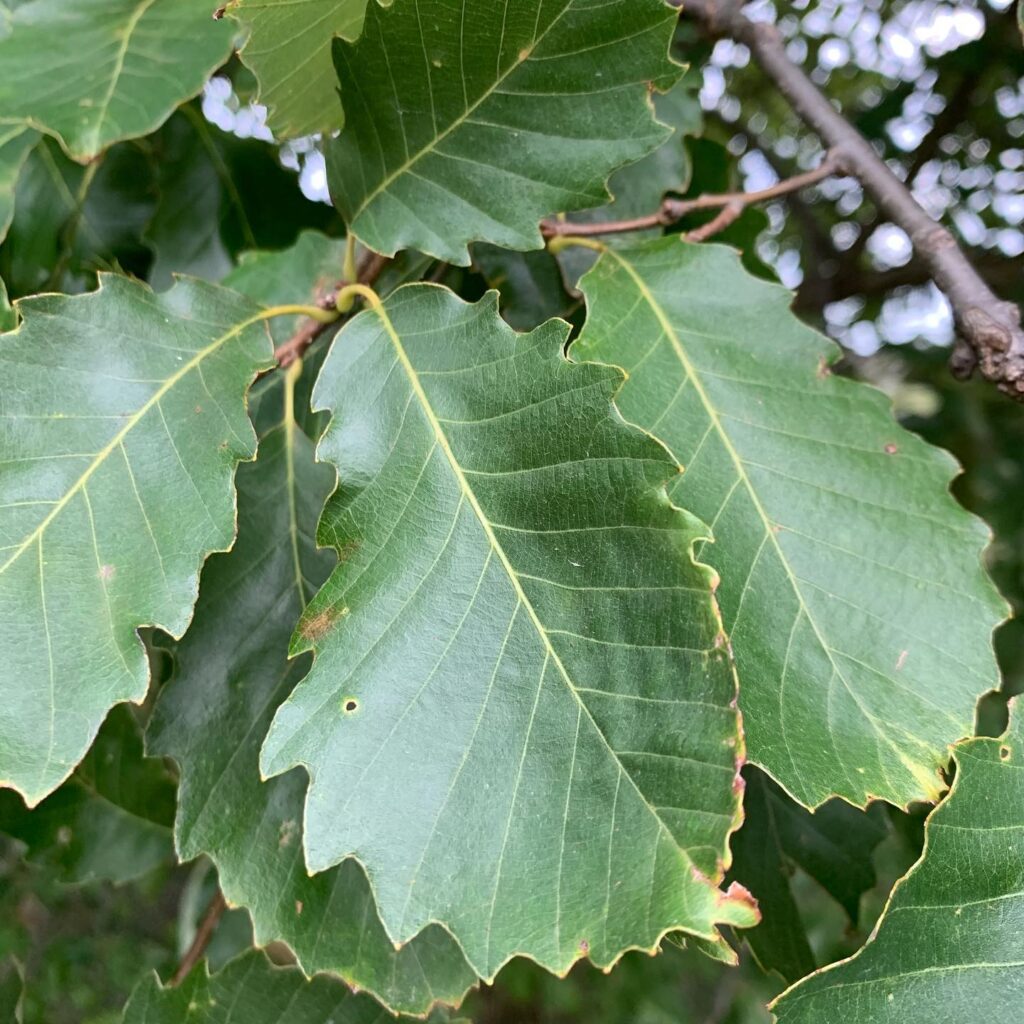
Named due to the resemblance of its leaves to the leaves of the chestnut tree native to North America called Chinkapin, Quercus muehlenbergii or Chinkapin oak is an easy-to-care-for tree with a wide climate range and tolerance to many different soil types.
This species is sometimes also referred to as the yellow oak due to the yellow-brown hue of its bark.
Hardy in zones 3 to 9, Chinkapin oak grows from 50 to 80 feet tall and 50 to 70 feet wide with a round and broad crown.
Squirrels, deer, and turkeys are just some of the wild animals that absolutely love its one-inch-long sweet acorns, which mature in the same season when they are produced.
Chinkapin oak naturally occurs from New England all the way to southeastern Mexico, which is a testament to its adaptiveness to all kinds of growing conditions.
One area where this species isn’t flexible is its light requirements: it needs full sun, meaning you will need to provide it with at least 6 hours of sunlight.
If you have the opportunity and a large area to grow Chinkapin oak, you will get an outstanding shade tree with a high ornamental value in return.
14. Dwarf Chestnut Oak (Quercus Prinoides)
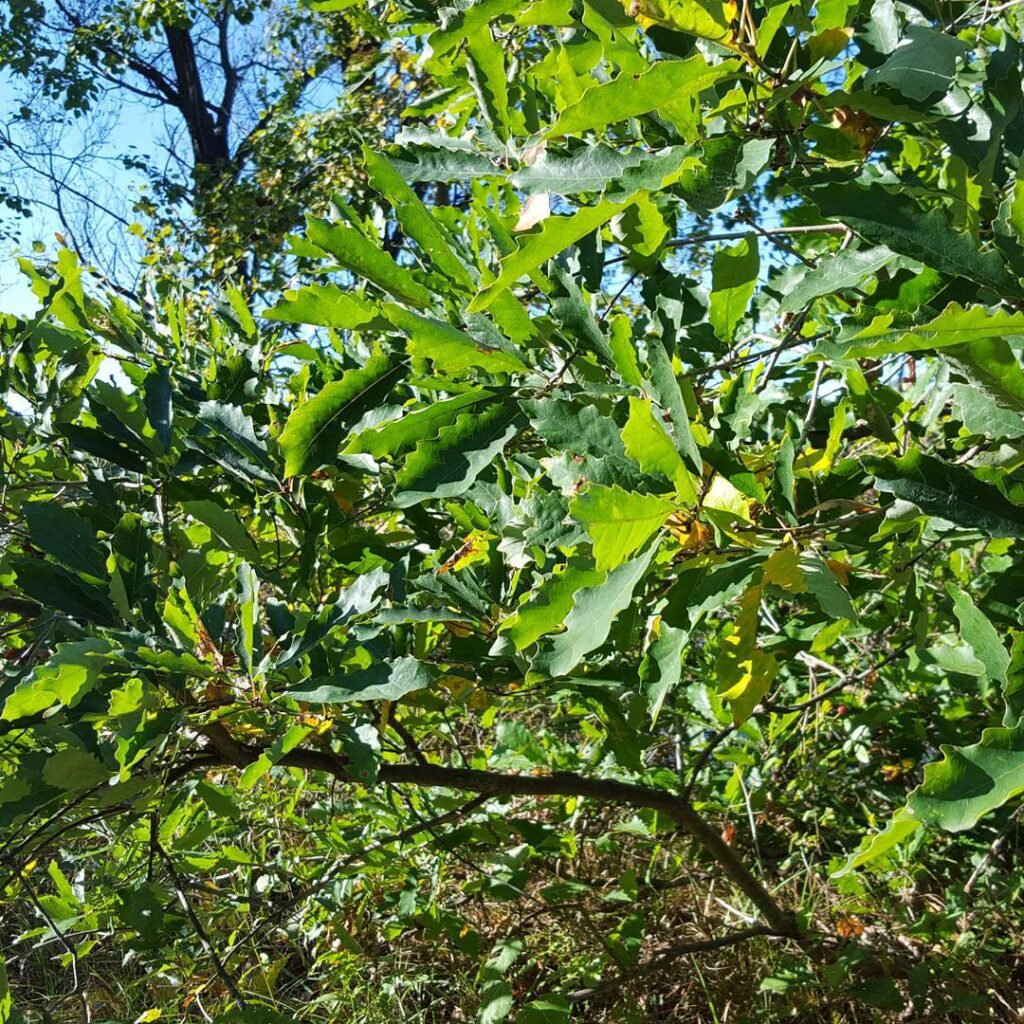
Next in our short series of oaks whose foliage resembles chestnut tree’s leaves is Dwarf chestnut oak, a rhizomatous shrub or a small tree that reaches between 13 and 20 feet in height and width.
Its trunk, which is five inches long in diameter, gives rise to clumps of many stems, forming a somewhat round tree top.
It has many of the features of the previously described Chinkapin oak but just on a smaller scale. For example, Dwarf chestnut oak leaves are two to six inches long compared to the Chinkapin oak’s four to seven inches long foliage.
The wildlife species greatly appreciate Dwarf chinkapin oak’s acorn not only because it is rich in proteins, fats, and minerals but also because the tree starts producing the sweet-tasting fruit at an early age.
15. Swamp Chestnut Oak (Quercus Michauxii)

Swamp chestnut oak is another tree from the white oak category whose foliage does not sport the usual lobes, hence the chestnut part of the name. The swamp part is due to its preferred habitat: it likes moist but well-drained soils and can be found near streams, rivers, and well, swamps.
In the past, Swamp chestnut oak was considered a variety of Chestnut oak, but there are many differences between these two oak types.
The size is the first difference, as Swamp chestnut oak can grow up to 100 feet tall while Chestnut oak reaches “just” 70 feet.
Swamp chestnut oak’s leaves are hairy on the underside and have more secondary veins (15 to 20). On the other hand, Chestnut oak’s leaves are not that hairy and do not feel velvety on touch. They also have a smaller amount of secondary veins on each side, between 10 and 14.
The bark is maybe the easiest way to tell them apart. Swamp chestnut oak has vertical cracks that give rise to thin sheets of bark, while Chestnut oak features horizontal splits with thicker plates. In fact, Chestnut oak has the thickest plates in the Quercus genus.
16. Sessile Oak (Quercus Petraea)
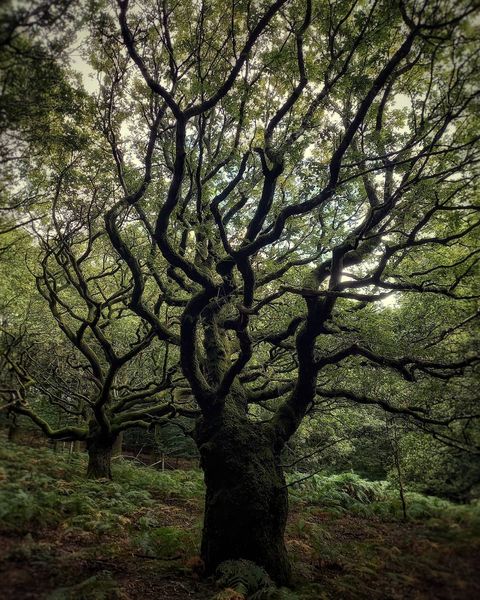
National tree of Ireland and Wales, Sessile oak is a tree native to semi-natural woodlands in western, central, and eastern Europe.
Although not as common or famous as the English oak, the Sessile oak has an equally important role in biodiversity because more than 300 wildlife species can be found on it.
Its most distinctive feature is the acorn. Unlike other oak species that produce acorns attached to the twig with a stalk, Sessile oak’s acorns are stalkless.
17. Southern Live Oak (Quercus Virginiana)
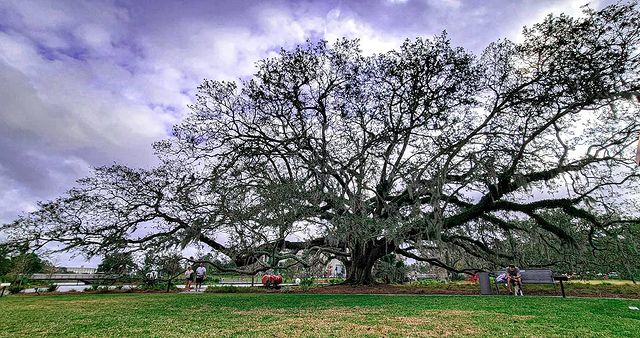
Many oak trees are called mighty, majestic, or stunning. However, some are more deserving of those epithets than others. A picturesque species, the Southern live oak is definitely in that category.
While it reaches between 60 and 80 feet in height, its many curved and gnarled branches spread as much as 120 feet horizontally, making the Southern live oak one of the most striking and magnificent trees in the plant kingdom, not just in the oak family.
Long twisted limbs are brought to the fore even more since the shiny, dark green foliage is not dense and only graces the far ends of the branches.
And like that is not enough, epiphytic plants such as Spanish moss and resurrection fern are usually drooping and spilling from the branches, which contributes to the impressiveness of an already epic tree.
It is just the second evergreen oak tree on our list of oak trees, along with the Holm oak. Holm oak is a true evergreen, though, while Southern live oak just appears to be so because it is constantly replacing old leaves with new ones.
18. White Oak (Quercus Alba)
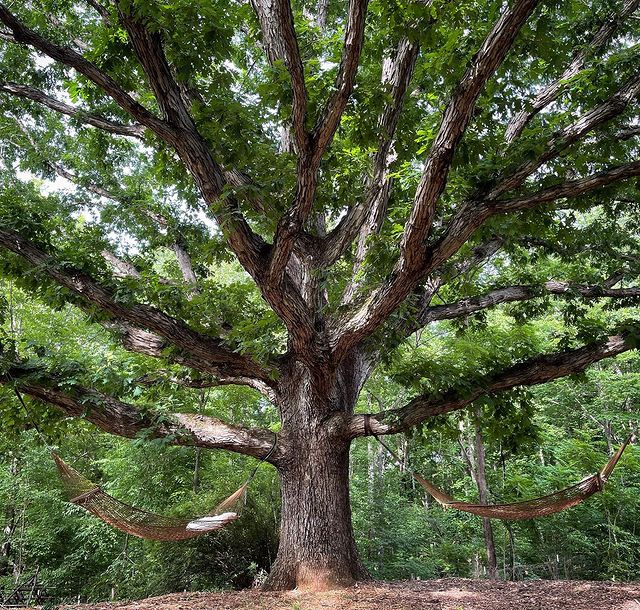
The most common tree in the eastern and central United States, white oak, is an imposing and graceful specimen and one of the most popular types of wood used for timber along with the pine.
White oak bark has many medicinal benefits and uses, which the native Indians were aware of and used the bark as an antiseptic and anti-inflammatory agent.
However, this tree’s most important value is to the ecosystem as it supports hundreds of animals, giving them shelter and food.
The fruit is a half an inch to one inch long orange-brown oval acorn. Protruding mostly from the cap, which is covered with tiny scales, white oak acorns are located on one to three-inch long stalks.
In August, we can find numerous unripe acorns on the ground, but those on the tree ripen in September and October.
19. Water Oak (Quercus Nigra)
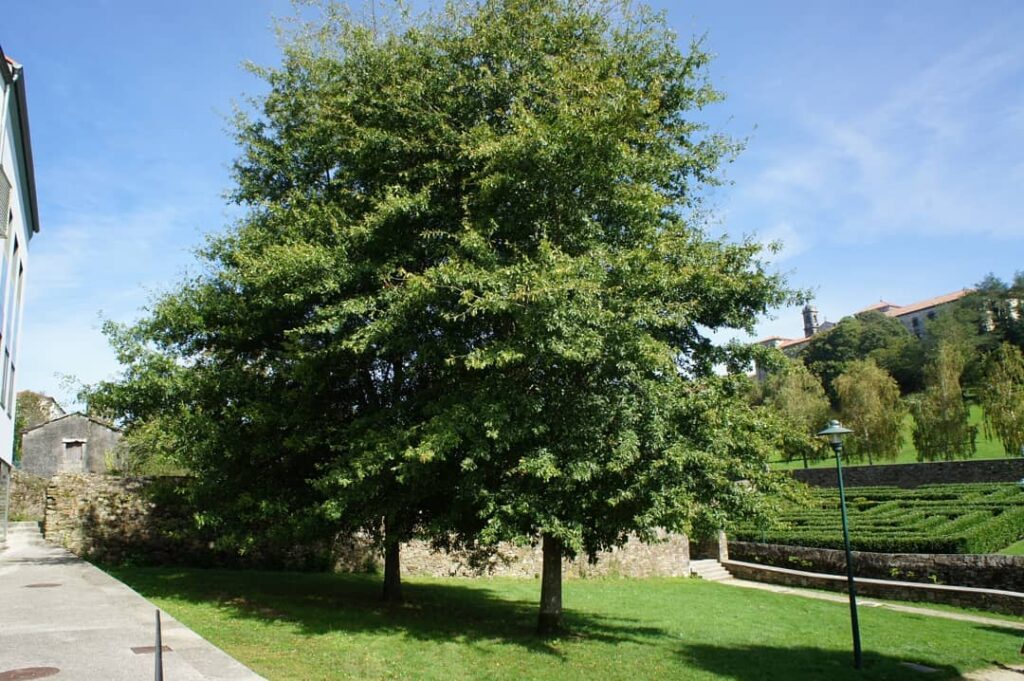
Water oak is a medium to large deciduous to semi-evergreen tree from the red oak group native to central and eastern US.
Unlike many types of oaks, Water oak is a speedy grower with more than two feet of vertical spread per year.
It also does not resemble most oaks in another category: longevity. Water oak is among the shortest-living oaks, with a lifespan between 30 and 50 years.
But maybe this should not be looked upon as a downside. With the aforementioned fast growth, you could plant a Water oak, nurture and watch it mature, and then finally wither away all in your lifetime, which is not something that is possible with other oaks.
Add to this the abundance of the acorns they yield, which attracts many wild animals such as raccoons, squirrels, turkeys, ducks, and deer, and you could have a “small” ecosystem on your shade tree in the backyard.
20. Shumard Oak (Quercus Shumardii)
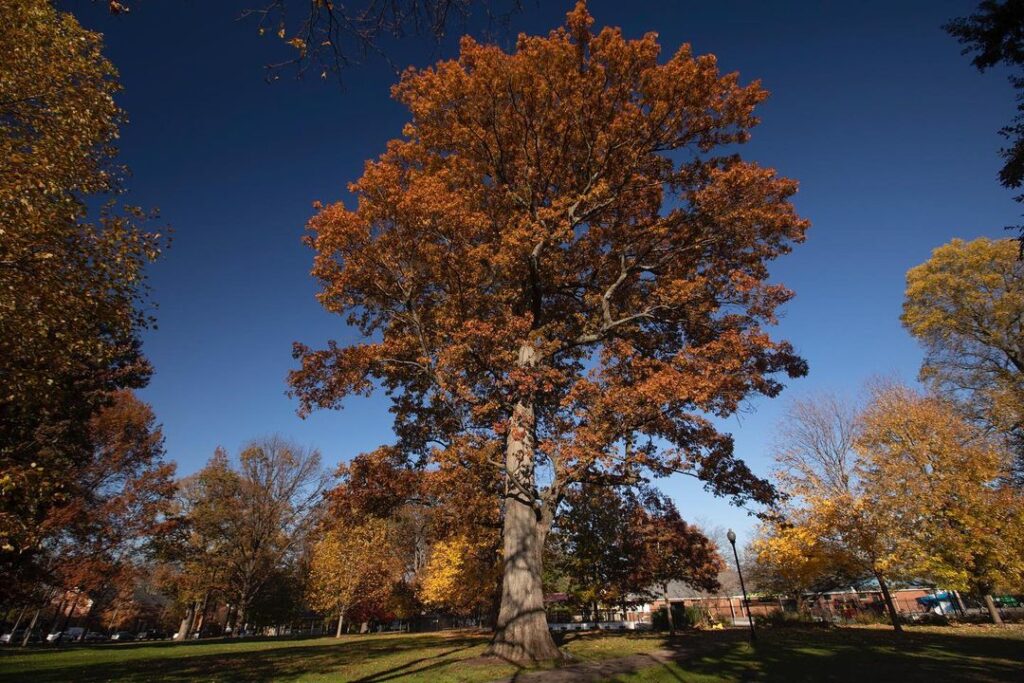
Shumard oak is a large tree with an open and broad round crown in the red oak family.
Thanks to its resistance to urban air pollution, drought and compacted soil, and showy foliage that flames in red to orange-red during the fall, Shumard oak is increasingly becoming popular in urban plantings such as home yards and commercial settings.
Shumard oak is also one of the largest oaks among the red oaks, which adds to its attraction.
Alternately arranged, deep green leaves have bristled tips and four to eight deep lobes. The face side of the foliage is thick and leathery, while the reverse is finely-pubescent and has a lighter green shade.
21. Laurel Oak (Quercus Laurifolia)

Native to southeastern coastal plains, Laurel oak is a fast growing oak with a dense and oval canopy that makes it an excellent ornamental and shade tree.
Darlington oak (Quercus Hemispherica) is often wrongly described as Laurel oak because these two trees have similar features. In fact, they were considered the same species in the past.
Some of their common features are that they are both fast-growing but short-lived, living for 70 to 90 years, and have smooth margined and leathery foliage that sports a glossy green on the upper side.
However, these two oaks differ in the shape of the foliage: Laurel oak has broad ovate and rhomboid leaves and is sometimes called Diamond-leaf oak for that reason, while Darlington oak’s leaves are more narrow and lanceolate.
Another way to distinguish between these two red oak trees is their preference for soil: Diamond-leaf oak likes wet but not damp soil and is commonly found near swamps, while Darlington oak prefers more dry and sandy soils.
22. Post Oak (Quercus Stellata)
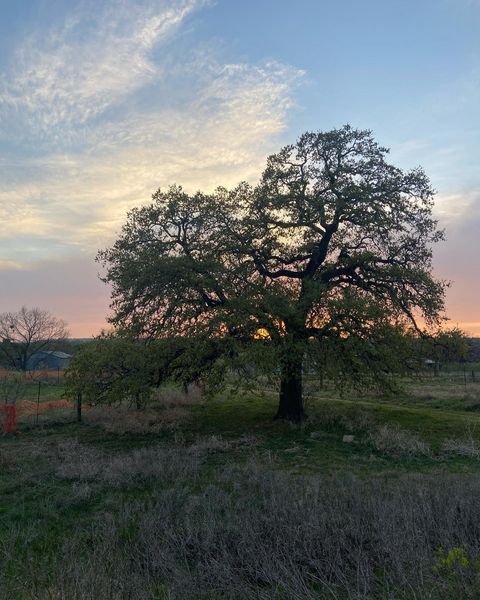
Also known as iron oak, box white oak, and rough oak, Post oak is a deciduous small to medium size tree with a gray to light reddish-brown irregularly grooved and thick bark.
Post oak foliage sports three pronounced lobes at the apex, which give it a cross shape.
Ovoid acorns are between half an inch to two-thirds of an inch long and ripen in the autumn of the first year.
Post oak wood is mainly used for railroad ties, posts (this was its initial use by the American pioneers and the reason behind the species’ name), and furniture. Occasionally it is also used for timber.
A whole ecoregion in Texas located between the Blackland Prairies to the west and the Piney Woods to the east was named Post oak savannah due to the abundance of this long-lasting tree.
23. Cherrybark Oak (Quercus Pagoda)
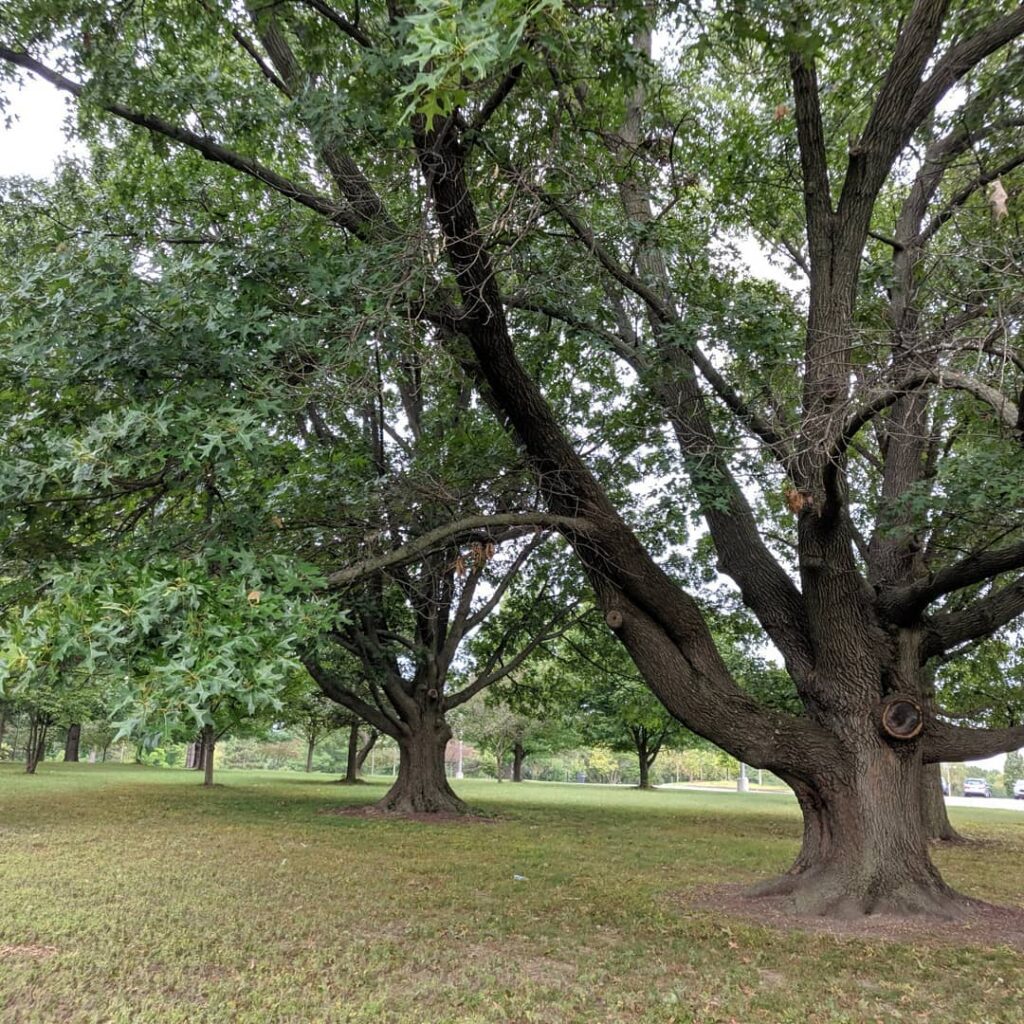
Cherrybark oak is a red oak tree that shares its native habitat with Southern red oak. That, plus many other similarities these two species share, was why Cherrybark oak was once considered a variety of Southern red oak.
However, these two species can be distinguished by the shape of the leaf lobes. In Cherrybark oak, they are more v-shaped, while Southern red oak has more rounded lobes forming a c-shape.
The bark is another feature by which you can differentiate between these two oaks. The bark of Southern red oak is rough and riddled with cracks, while Cherrybark oak features something atypical for most oak trees, smooth bark.
24. Oregon White Oak (Quercus Garryana)
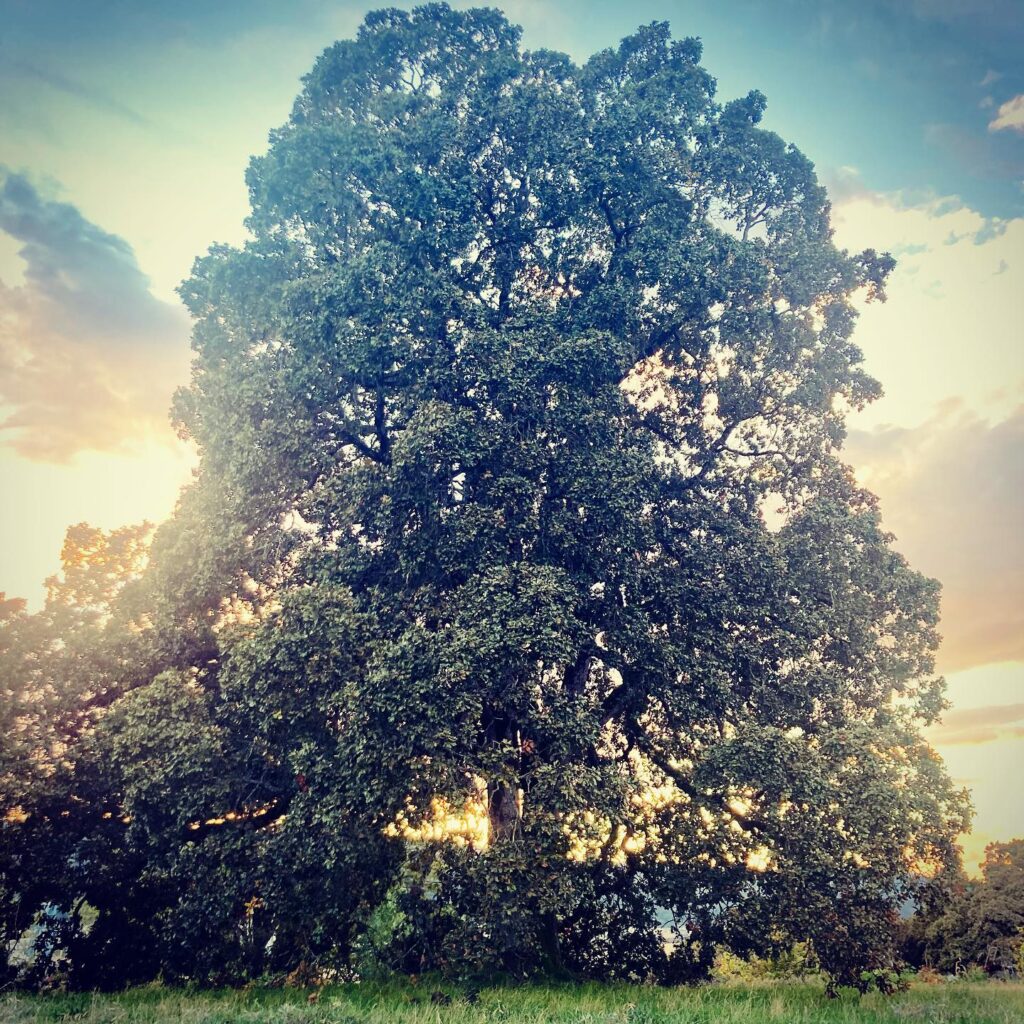
One of only four deciduous oak naturally occurring along the Pacific coast, Oregon white oak is a rare and declining oak variety that can live up to 500 years.
Its wavy, glossy green leaves are simple and alternate, growing between four and six inches with a pale green underside.
Oregon white oak’s tall and slender stature and the mushroom-shaped crown, which in some species is as wide as the tree’s height, make it an outstanding candidate for landscaping. In addition, this strong and sturdy plant grows in all kinds of soil types and can withstand both dry and wet terrains.
However, Oregon white oak is a slow grower, which makes many people think twice about cultivating it.
If you want to learn even more about oaks and acorns and how to identify them, please watch the video below.
Frequently Asked Questions
What is the fastest-growing oak?
With a growth rate reaching as much as three feet per year, Nuttal oak (Quercus texana) is the fastest growing tree in the oak family.
Do all oaks produce acorns?
All acorns do produce acorns. However, not all oaks start making acorns at the same age, leading some people to think that certain oak species do not yield acorns. The typical starting age of acorn production is 20 years.
Editor’s Recommendations
28 Interesting Irish Plants (With Pictures)







